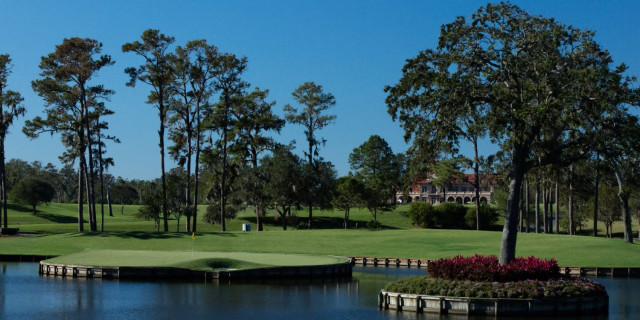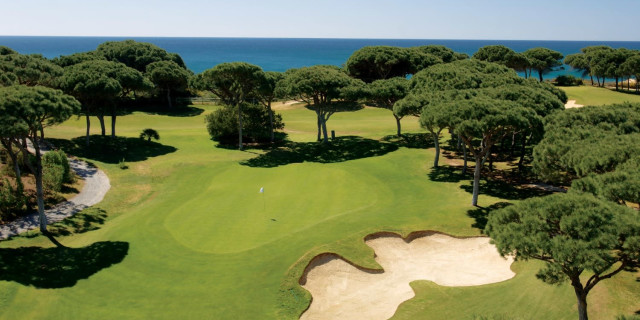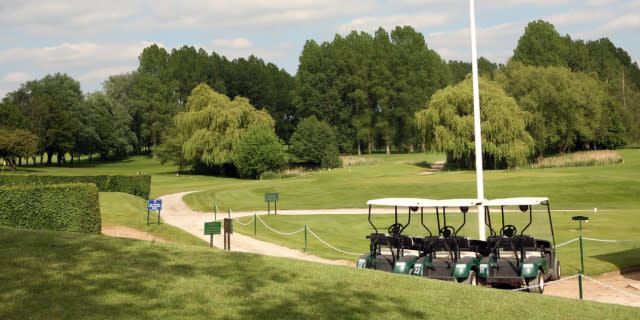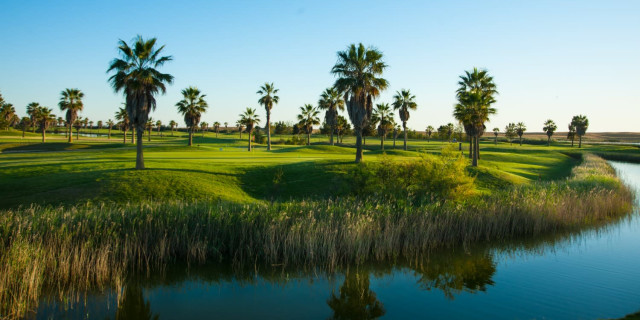10 of the Best - Courses in Berkshire
Post by Sports Writer Derek Clements
Berkshire is probably best known for Windsor Castle, which attracts tens of thousands of tourists every year. It is within easy reach of London, making it perfect for commuting to the capital. Berkshire is also one of the wealthiest counties in England, with more millionaires to the square mile than anywhere else in the southeast. It is home to Eton College, Legoland, Highclere Castle, Ascot and Newbury racecourses and Reading Football Club, but we think it merits a special mention for the quality of its golf courses, none more so than the magnificent Old Course at Sunningdale. Check out these courses, which we consider to be 10 of the best in Berkshire.
Sunningdale Golf Club
Green fee £205; November 1-March 31, £125
Par 70, 6,627 yards, heathland
The Old Course at Sunningdale is the Mona Lisa of heathland golf courses. It is a work of art and although it is in Berkshire, it is affiliated to the Surrey Golf Union. You will be open-mouthed at the beauty of the place if you have never played here before. The greens are among the best you will ever find. Always in fantastic condition, they feature lots of borrows and slopes and many wonderfully-crafted bunkers. The heather gives the course a glorious purple hue. It has held many top tournaments and is a favourite among the world's best players. One glance at the place and you will know why. The finishing stretch is terrific. The 15th is a 239-yard par three, that will need a driver for most people to reach the green. There are bunkers left and right and a heather-filled bank on the right. The 16th is a par four measuring 434 yards, with the second shot played uphill – a cross bunker short of a well-bunkered green is to be avoided. The 17th, measuring 425 yards, features a downhill tee shot with a copse on the left and a bunker on the right that can't be seen from the tee. The approach is played to a sloping green. The final hole measures 423 yards, with a fairway that slopes from left to right, where a bunker awaits. Avoid that and you have to clear another cross bunker. There is an interesting story about the bunkers protecting the final green – they were created when the Luftwaffe bombed the area during the Second World War and were left because they improved the hole!
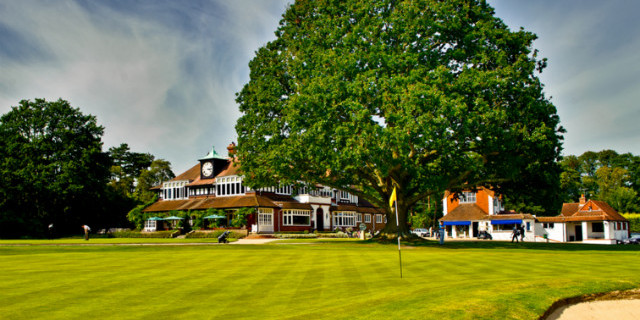
Swinley Forest Golf Club
Green fee £175
Par 70, 6,019 yards, parkland/heathland
If ever a golf course proved that it doesn't need to be long to be regarded as a gem, this Harry Colt-designed classic is it. The scenery is spectacular, there is an abundance of heather (fine to look at but don't get your golf ball tangled amongst it), plenty of trees and punishing rough. It measures barely 6,000 yards and there is just one par five, but you will hit every club in the bag – and every shot. And if you don't keep the ball on the short and prepared then you can expect to record some big numbers. Course management is the key, with the right position essential on the doglegs. All the par threes at Swinley Forest are spectacular and the greens are surely among the best anywhere in England, featuring some serious slopes. Keep it straight and putt well and you have a chance of making a decent score, but you may find that you need to play here several times before you master the nuances of the place. It starts with three straightforward par fours, but miss the fairway and you quickly get a feel for how difficult good scoring can be.
Bearwood Lakes Country Club
Par 72, 6,850 yards, parkland
Designed by Guy Hockley, Bearwood Lakes provides an excellent test of patience and accuracy. The course meanders through pine, beech and oak trees, ready to swallow up wayward drives or approach shots. And water comes into play on no fewer seven holes. The first hole measures 389 yards, with huge bunkers to the left and right, before you hit an approach to a green guarded by thick rough and a huge bank on the left. The third is a 205-yard par three played from an elevated tee to a smallish green surrounded by bunkers, and with trouble waiting if you go too far. The 10th is a classic par four, measuring 427 yards. You drive through an avenue of trees which give the impression that the fairway is narrower than it actually is – a fairway bunker on the left is to be avoided before an approach to another well protected, sloping green. The 18th hole is 432 yards long, with trees running down the right hand side. The fairway slopes gently from right to left and a small green is protected by two bunkers, with the one on the right being massive, and deep.
Course Review: /course/news/5941/Bearwood_Lakes_Review.html
Video Review: /news/view/9829/Video_Review_Bearwood_Lakes_Golf_Club.html

East Berkshire Golf Club
Green fee £50
Par 69, 6,236 yards, parkland
There is only one par five, and it is regarded as the second easiest hole on the course, but there are plenty of testing holes at East Berkshire. The third is a 429-yard par four with not a bunker in sight, but the tree-lined fairway is pretty narrow and it is easy to leave yourself blocked out with the approach to a sloping green. Take a rescue club and find the fairway. The drive to the 385-yard eighth hole is blind but should be played down the left with a fade to open up the green. Water on the left is to be avoided. The 14th, at 425 yards, is a great par four where anything other than a dead straight drive will probably mean you can't hit the green in two. The green slopes from back to front and is protected by a large bunker on the left. The 18th, at 409 yards, is a good closing hole. The ideal drive is long and to the right of the fairway – going left leaves a second shot over trees to a very long green.
West Berkshire Golf Club
Green fee £25, winter £21
Par 73, 7,022 yards, parkland
The first nine holes at West Berkshire measure a formidable 3,884 yards, with three par fives including the fifth, which runs to 627 yards. The first hole is 574 yards long and is a gentle dogleg from right to left, with a bunker on the right to be avoided from the tee. The fairway is tree-lined and when you finally get there the approach is to a green surrounded by trees. The fifth is a monster and once again you have to play through an avenue of trees. From the tee, a copse of trees and water on the left are to be avoided – it is another two good strikes to reach the green, behind which is a lake. The 11th is a 165-yard par three with trees right and left. The tee shot is played to a raised green protected by two punishing bunkers. The 18th is a terrific 445-yard par four, where trees come into play again. Go too far left from the tee and a bunker lies in wait, but even if you find the middle of the fairway you still have to clear two ponds to reach a well-bunkered green.
Donnington Grove Golf Club
Green fee £32.50, winter £27.50
Par 72, 7,108 yards, parkland
This Dave Thomas-designed course is set in more than 550 acres on the outskirts of Newbury and is one of the most challenging layouts in Berkshire. It is overlooked by Donnington Castle and was opened in 1993. It features two very contrasting nines, with the front nine working its way over undulating ground that offers great views, while the second nine is a traditional parkland layout, with plenty of trees and water hazards. Be aware that there are fairly long walks between the 1st and 2nd, 8th and 9th and 9th and 10th holes, so you might want to consider hiring a buggy. The first hole features a sloping fairway – miss it and you could be starting off with a lost ball. The rough is well manicured and, by and large, the fairways are fairly generous.

Berkshire (Red) Golf Club
Green fee £150
Par 72, 6,452 yards, parkland
This course features some dramatic elevation changes and comprises six par threes, six par fours and six par fives. The par four sixth measures just 360 yards but it is arguably the best on the course. It is a well designed dogleg calling for a precise drive before an approach played to well guarded and heavily contoured green. The ninth is a 488-yard par five with trees on either side of the fairway. Big hitters may need to be wary of running out of fairway on the right hand side. Keep the approach to the right of the green to avoid the slope and bunker on the left. Plenty of trees guard the fairway to the 436-yard 14th, but the fairway is wider than you think. However, there is a ditch that might catch long drives. The green slopes sharply to the left, so the approach shot should be kept to the right. Unusually, the course closes with a par three. It is 165 yards long but it plays uphill so you need one more club than you might think – it is a two-tier green, so it important to find the right level.
Calcot Park Golf Club
Green fee £55, winter £40
Par 70, 6,300 yards, parkland
This Harry Colt course features three excellent practice areas and opensand finishes with two tough par pars. The first hole is a testing par four of 438 yards that demands two well-struck shots to negotiate the tree-lined fairway with a water hazard on the right that runs all the way to the green. The par five sixth measures just over 500 yards, with three cross bunkers to be negotiated with a drive struck from an elevated tee. A further hazard to be avoided is the open ditch which runs across the fairway, just before the green – it means you have to think about your second shot. The 12th, the longest hole at 514 yards, is a par five with two bunkers on either side of the fairway to catch a wayward drive. Your second shot sees you crossing the road beyond two more bunkers to a tricky green. The final hole is a fearsome par four of 465 yards which demands a long,straight drive back over a road that crosses the fairway. A long approach must avoid the two bunkers at the front of a green sitting beneath Calcot Park Mansion House.
Sonning Golf Club
Green fee £50
Par 70, 6,329 yards, parkland
Harry Colt was a busy man in this part of the world, and Sonning Golf Club is another fine example of his handiwork. The 274-yard par four may appear to be fairly innocuous but get your drive wrong and your ball will be swallowed by one of several bunkers – there is also a very narrow entrance to the green. The key stretch to scoring well round Sonning is from the 10th to the 14th, measuring 406 yards, 399 yards, 410 yards, 453 yards and 399 yards and featuring plenty of doglegs that call for pinpoint accuracy from the tee. The 18th hole, a 475-yard par five, has been completely redesigned in recent years, with many trees removed to create a new fairway sloping green protected by swales – it can be reached with two good blows but your second shot needs to be well hit and perfectly placed to find the green.
Reading Golf Club
Green fee £40
Par 70, 6,224 yards, parkland
Reading was designed by James Braid, who was paid the princely sum of 25 guineas for doing so. It was altered by Harry Colt and redesigned in the 1930s by Phillip Mackenzie Ross because the members felt the course was too difficult. The third hole is a slight dogleg from left to right, a par four measuring 387 yards. Anything hit right off the tee will be blocked out by a large copse of trees. It is important to take one club more than you think when playing your approach as it plays slightly uphill with two bunkers protecting the green. The ninth hole is a par five that is 498 yards long and can be reached with two good shots. The fairway slopes from right to left. If you are playing the hole as a three-shotter then you should hit your approach to the right and the ball will feed down towards the flag. The 14th is another par five, this one measuring 503 yards. The drive is hit through an avenue of trees, with a good strike reaching a ridge halfway down the fairway. Two bunkers left and centre lie in wait to catch a second shot that is anything less than perfect. The 18th is a great finishing hole, a 446-yard par four, with the clubhouse sitting behind the green. The approach is played to a large green with a hedge at the back of the green that marks out of bounds, with horrible pot bunkers on either side of the putting surface.
Related Content:

